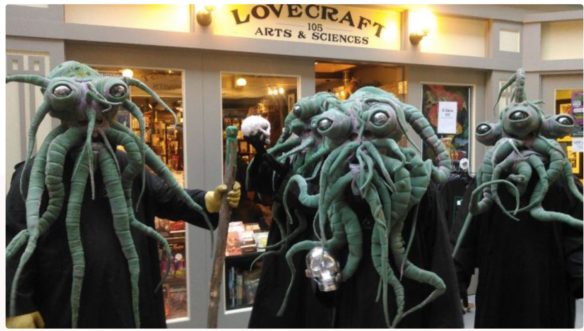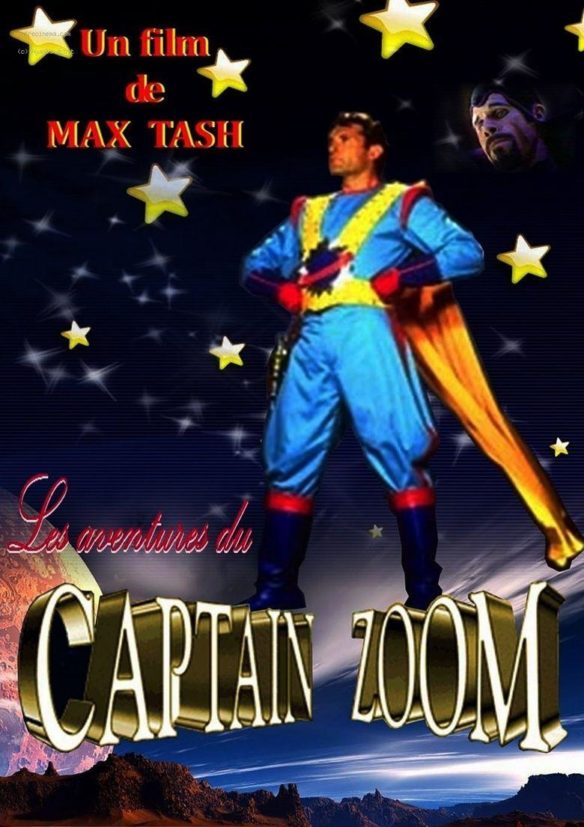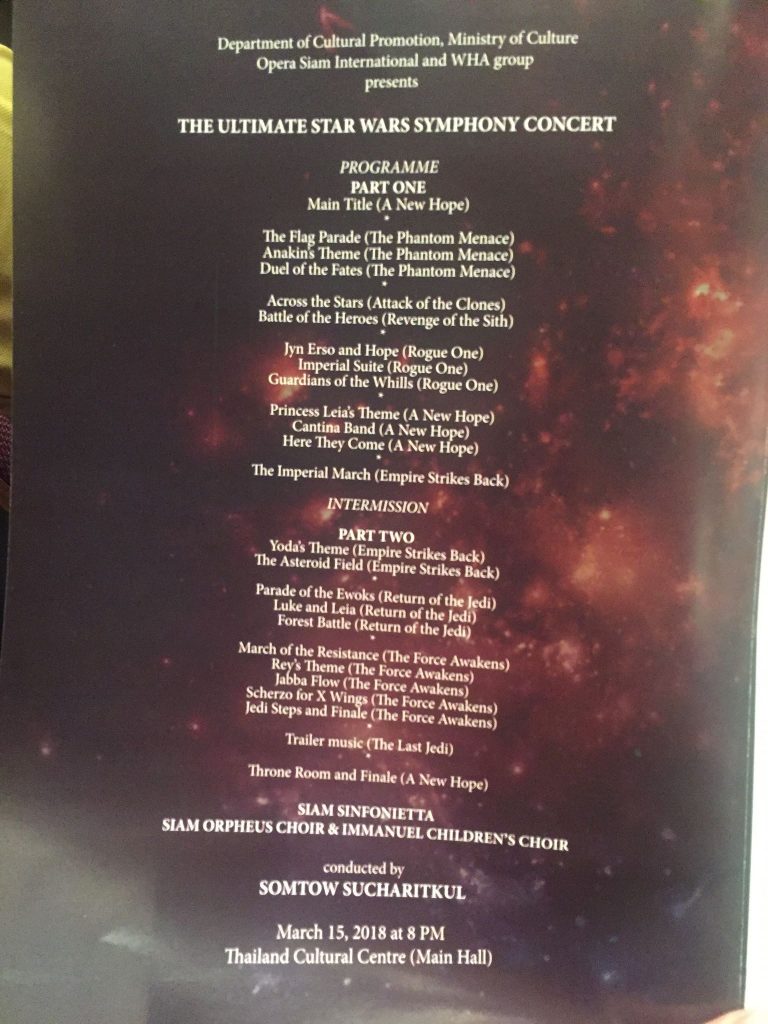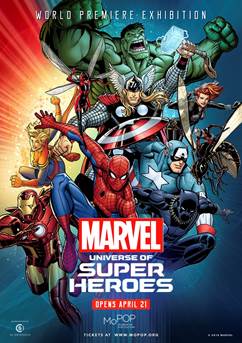(1) TAKING THE LEAD. One of my favorite reviewers has been stepping up in her community, and has a book out encouraging others to do the same: “Why You Should Run For (Local) Office, by Adrienne Martini” at Whatever.
Author Adrienne Martini knows just a little about this: she ran for local office, and then chronicled the experience in her 2020 memoir Somebody’s Gotta Do It. Now she’s here to talk a little bit about that experience, and why it’s something you might consider thinking about as well.
(2) PLAYWRIGHTS SUMMONED. You have until January 15 to enter: “Accepting Submissions for 2021 Neukom Institute Literary Arts Awards”.
The Neukom Institute for Computational Science at Dartmouth College is accepting play submissions for the 2021 Neukom Institute Literary Arts Awards.
The fourth annual Neukom Award for Playwriting will consider full-length plays and other full-length works for the theater that address the question “What does it mean to be a human in a computerized world?”
Playwrights with either traditional or experimental theater pieces, including multimedia productions, are encouraged to submit works to the award program.
The award includes a $5,000 honorarium and support for a two-stage development process with table readings at local arts festivals. Works that have already received a full production are not eligible for the competition.
The deadline for all submissions is January 15, 2021. The awards will be announced in the spring of 2021.
(3) IT DOESN’T TAKE A WEATHERMAN. James Davis Nicoll lets his hair down in a Tor.com post “Five Hippie-ish SF Novels Inspired by Sixties Counterculture”. He starts with–
The Butterfly Kid by Chester Anderson (1967)
This book is set in an imagined futuristic New York, which oddly enough has remained stuck in an eternal 1960s. There’s still a vibrant hippie community in Greenwich Village. Youngsters from across square America travel to New York to discover themselves; there they are mentored (or at least observed) by old hands like Chester Anderson and his close friend Michael Kurland. This Greenwich Village is populated by nonconformists as eccentric as they are kind-hearted—for the most part.
The most notable exception is shameless grifter Laszlo Scott. For once, Scott’s most recent pharmaceutical offering is entirely authentic: his “Reality Pills” can make dreams real. The aliens supplying Scott have a malign intent: they may not want to actively unleash the heat rays, but they are counting on human nightmares to exterminate us all, leaving the world ripe for alien appropriation. Standing between humanity and certain doom: sixteen Greenwich Village potheads and hipsters. Two of whom are missing….
(4) A DECADE OF GOOD BOOKS. Happy birthday to the Fantasy-Faction review site – “Fantasy-Faction Turns 10! Help Us Spread the Love of Reading!” They’re asking fans to celebrate by contributing to organizations that support reading among the economically disadvantaged.
…We couldn’t have made it ten years without all of you. And we can’t wait to see what the next ten years brings. Let’s close out this year of sadness and insanity with the best December this world has ever seen. Let’s give the gift of reading and share the love of fantasy, together!
(5) REEDPOP ABANDONS BOOK EXPO. “BookExpo and BookCon Are No More” – Publishers Weekly attends the funeral.
U.S. book publishing’s biggest trade show is being “retired,” show organizer ReedPop announced today. BookExpo, along with BookCon and Unbound, will not be held in 2021 after being canceled in 2020 due to the pandemic.
ReedPop, the pop culture event–focused subdivision of Reed Exhibitions, said that, given the “continued uncertainty surrounding in-person events at this time,” the company has decided “that the best way forward is to retire the current iteration of events as they explore new ways to meet the community’s needs through a fusion of in-person and virtual events.”
In order to try to hold the event earlier this year, Reed moved the date from its usual spot at New York City’s Javits Center in late May to late July, but as the coronavirus continued to make larger meetings impossible, Reed cancelled the live conference and held six days of free virtual programming from May 26-31, the original dates of BookExpo and BookCon.
…Reed Exhibitions’ convention business has been hammered by Covid-19. Through the first nine months of 2020, revenue was down 70%, parent company RELX reported. It expects full year revenue of £330m-£360 million and after a range of cost-lowering initiatives—including layoffs—total costs for the year are expected to be £530m-£540 million, excluding one-off costs related to restructuring and cancellations. Total Reed Exhibitions revenue in 2019 was £1.3 billion.
(6) ELDRITCH CHARITY APPEAL. Weird Providence asks for support on Giving Tuesday: “Lovecraft Arts and Sciences 2020 Fundraiser”.

…We at the Lovecraft Arts & Sciences Council work hard to bring people together from around the world, to cultivate a sense of community through exciting and unique programming, and to foster camaraderie among kindred souls. We strive to provide a welcoming home here in Providence for all members of the vibrant and diverse Weird community, and we’re proud of our success over the past eight years.
NecronomiCon 2019, our biggest event yet, saw over 2,000 folks gather in Providence to share their passion for the Weird. And our retail store continues to garner rave reviews as a “must-visit” and “treasure” for its unique selection and helpful staff. These are just a few ways that our organization enriches our city and the global Weird fiction community.
Today, on this Giving Tuesday, we’re asking for your help.
The Lovecraft Arts & Sciences Council is a nonprofit organization. We manage to do what we do with minimal staff – just two paid employees that help run our storefront in Providence. The rest of our operation relies on a squad of dedicated volunteers — of which I am one, squeezing in work for the organization between the tasks of my real job….
(7) ARECIBO OBSERVATORY DESTROYED. [Item by Mike Kennedy.] Sadly, the iconic radio telescope at the Arecibo Observatory has collapsed. The suspended platform at the focal point broke loose and crashed into the main reflector below. This follows earlier breaks in the supporting cables. Business Insider has the report: “The Arecibo telescope’s 900-ton platform has crashed into its disk below and destroyed the iconic radio observatory”.
The second-largest radio telescope in the world is no more.
The Arecibo Observatory’s 1,000-foot-diameter telescope collapsed at 8 a.m. Tuesday in Puerto Rico. The telescope’s 900-ton platform, which was suspended 450 feet in the air to send and receive radio waves, crashed into its disk below, pulling down with it the tops of three support towers.
(8) WHAT A TANGLED WEB WE WEAVE. [Item by Martin Morse Wooster.] Nicholas Barber, in the BBC story “How a Spider-Man musical became a theatrical disaster”, notes that Spider-Man: Turn Off The Dark had its first preview ten years ago. Barber discusses the many reasons why this musical became one of Broadway’s biggest money-losers, including many failures of its special effects and the fact that composers Bono and the Edge had never heard a Broadway musical when they accepted the assignment to write the score and had to be sent an emergency care package of CDs with songs on them so they would know what to do.
It’s been 10 years since one of the most momentous nights of Glen Berger’s life. He was already an established off-Broadway playwright and children’s television writer, but on 28 November 2010, a musical he had scripted had its first preview at the Foxwoods Theatre in New York – and it was shaping up to be an international smash.
The musical was Spider-Man: Turn Off the Dark. Its friendly neighbourhood title character had been a beloved pop-cultural icon for five decades, and had just featured in three Hollywood blockbusters. The songs were written by rock’n’roll royalty, U2’s Bono and The Edge. And the director was Julie Taymor, who had masterminded the record-breaking stage adaptation of Disney’s The Lion King. Turn Off the Dark couldn’t go far wrong with a pedigree like that. Could it?
Which is not to say that Berger wasn’t nervous. Speaking to BBC Culture from his home in upstate New York, he remembers how strange it felt to be unveiling something he and his collaborators had been devising together for years. “We were opening the door,” he says, “either to Willy Wonka’s chocolate factory or some sort of slaughterhouse.” The show relied on complicated aerial stunts in which the performers were suspended from wires, and so the first preview was bound to keep stopping and starting as technical hitches were addressed….
(9) HEADHUNTER THWARTED. TMZ, in the story “Darth Vader’s Original ‘Star Wars’ Helmet Stolen” says that Frank Hebert (note spelling) allegedly broke into Bad Robot Productions and left with a shopping cart full of Star Wars stuff, including an original Darth Vader helmet, but all the stolen stuff was returned.
…Law enforcement sources tell us … 38-year-old Frank Hebert was arrested Monday night after he allegedly broke into the Bad Robot Productions building in Santa Monica and made off with ‘Star Wars’ movie memorabilia … including Darth’s helmet.
We’re told cops responded to the scene and were told by security personnel that Hebert had been captured on surveillance video illegally entering the building through the rooftop, and casually walked out with a shopping cart full of stuff.
Our sources say cops quickly found a guy pushing a cart down the street not too far away, which we’re told was full of ‘Star Wars’ stuff — as in, original props used in the actual movies.
(10) NO DOUGHS. SYFY Wire sets the frame of this video designed to encourage charitable giving: “Broke Batman parody from Agents of S.H.I.E.L.D. crew boosts COVID relief”.
The video is a way for Ward and the S.H.I.E.L.D. crew to raise awareness for a good cause: lending a financial hand to entertainment workers whose livelihoods have been affected by the pandemic-related shutdowns across the industry. Through the associated #fundthebat social media campaign, fans can chip in a little moolah to bolster the Motion Picture Television Fund’s Covid-19 Emergency Relief Fund. The clip links to a GoFundMe page where anyone can donate — regardless of which side they’re on in the Marvel-versus-DC debate.
The fund says it’s using “every dollar” contributed through the campaign to “support the thousands of out of work carpenters, hair stylists, drivers, make up artists, painters, set dressers, electricians, editors, grips, camera people, actors, writers and directors who created the shows and movies that have kept you entertained during this difficult time.”
(11) FANZINE FAN OBIT. Ansible® 401 released today relayed this notice from Robert Lichtman:
Miriam Dyches Carr Knight Lloyd, US fan active in the 1950s and 1960s with fanzines including various ‘Goojie Publications’ titles as Dyches or Carr, Klein Bottle and later issues of Fanac with her first husband Terry Carr, and A Funny Thing Happened on the Way to Poughkeepsie with her second husband Frank Knight, died on 23 October.
(12) MEDIA BIRTHDAY.
- December 1, 1995 — The Adventures of Captain Zoom In Outer Space premiered on television. Directed by Max Tads from a script by Brian Levant, Rick Copp, and David A. Goodman, it starred Daniel Riordan, Ron Perlman, Nichelle Nichols, Liz Vassey and Gia Carides. It follows the adventures of Fifties actor Ty Farrell who plays the title character in a Captain Video-like program, The Adventures of Captain Zoom in Outer Space. Although you’ll find references on the net for a series having been made and for fans having seen it, there wasn’t such a series. Only the TV movie. Audience reviewers at Rotten Tomatoes give it a rating of, well, they don’t have a rating for it.

(13) TODAY’S BIRTHDAYS.
[Compiled by Cat Eldridge and John Hertz.]
- Born December 1, 1886 — Rex Stout. ISFDB says his Nero Wolfe’s “The Affair of the Twisted Scarf” which was also published as “Disguise for Murder”” and also “Poison à la Carte” are SF. Now I’ve read each of them quite some years back but I don’t recall anything in them that makes them genre. Now I adore Nero Wolfe but never even thought of these novels as being genre adjacent. (Died 1975.) (CE)
- Born December 1, 1942 — John Crowley, 78. I’m tempted to say he’s a frelling literary genius and stop there but I won’t. Mythopoeic Fantasy Award and World Fantasy Award winning Little, Big is brilliant but if anything his crow centric novel of Ka: Dar Oakley in the Ruin of Ymr which received the Mythopoeic Fantasy Award makes that novel look like child’s play in comparison. Did you know he wrote a novella called The Girlhood of Shakespeare’s Heroines? Or Lord Byron’s Novel: The Evening Land, which contains an entire imaginary novel by the poet? (CE)
- Born December 1, 1964 — Jo Walton, 56. She’s won the Astounding Award for Best New Writer, and the World Fantasy award for her novel Tooth and Claw in which dragons got positively and delightfully Victorian. Even if they eat each other. Her Small Change trilogy may be the finest WW II novels I’ve read bar none, and her Sulien series is an excellent retelling of the Arthurian myth. Among Others which won a Hugo and Nebula is she says about the “coming-of-age experience of having books instead of people for friends and solace”. I can relate to that as I imagine many here can too. (CE)
- Born December 1, 1964 — Alisa Kwitney, 56. Daughter of Robert Sheckley and Ziva Kwitney. Editor, Vertigo Books. Contributing author, The Dreaming: Beyond The Shores of Night, set in Gaiman’s Sandman multiverse, scriptwriter for the Vertigo Visions: The Phantom Stranger graphic novel and editor of Vertigo Visions: Artwork from the Cutting Edge of Comics Currently an editor at Brain Mill Press. (CE)
- Born December 1, 1965 — Bill Willingham, 55. Best known I’d say for his long running Fable series though personally I think his best work was Proposition Player. He got his start in the late 1970s to early 1980s as a staff artist for TSR games where he was the cover artist for the AD&D Player Character Record Sheets and a lot of games I don’t recognize not being a gamer at that time. I do recognize his superb 1980s comic book series Elementals, and he later write the equally excellent Shadowpact for DC. I was always ambivalent about the Jack of Shadows series that he spun off of Fables. His House of Mystery was rather good as well. (CE)
- Born December 1, 1971 — Emily Mortimer, 49. She was the voice of Sophie in the English language version of Howl’s Moving Castle, and Jane Banks in Mary Poppins Returns. She was the voice of Lisette in the superb Hugo animated film, and was Nicole Durant in The Pink Panther. (CE)
(14) GOO GOO GUY. Start running now – Vulture brings word that “Peter Dinklage to Reportedly Star in Toxic Avenger Reboot”.
…Based on the four-film franchise and Marvel comic-book series, Dinklage’s Toxic Avenger will reportedly retain the character’s origin story (hapless underdog pushed into toxic waste and reborn with superpowers, naturally) while exploring “environmental themes” with a take on “the superhero genre in the vein of Deadpool.” Because God help superhero movies if we force Toxie into a gritty reboot, too.
(15) YESTERDAY’S TOMORROW. At Monster Movie Music, they’re putting together episode recaps of old black-and-white TV sff with screencaps and connective text, like “TALES OF TOMORROW / ‘Appointment On Mars’ – 1952”. Interesting idea.
Here’s a wild one from the TOT gang. In this episode, three men man a rocket and go to Mars where they will mine for rare minerals and ore to take back to Earth to cash in. But, things don’t go as planned…
(16) MONOLITHS: EASY COME, EASY GO. The Utah monolith and its Romanian imitator vanished less mysteriously than they arrived, in that the people who took them down are at least known to someone.
Salt Lake City’s Fox13 repots “Well-known Moab slackliner says he took down Utah monolith”.
“On the night of November 27, 2020, at about 8:30pm– our team removed the Utah Monolith,” [Andy] Lewis wrote, in a Facebook post. “We will not be including any other information, answers, or insight at this time.”
And in Europe: “Romanian monolith mystery solved: two blokes carried it off” says Yahoo!
You wait for ages for an era-defining monolith created by an unseen alien race to appear out of nowhere, then two turn up at once.
After the mysterious emergence of a shiny metallic plinth in the Utah desert piqued the imaginations of sci-fi fans across the world last week, another appeared just a few days later in rural Romania.
And just like its American cousin, it has vanished – seemingly without a trace.
The mayor of the Romanian town where the local monolith was planted seems to know more than he’s saying:
…The mayor had hoped that the structure could potentially become a tourist attraction for Piatra Neamt, a picturesque mountainous town with a population of around 100,000. But he offers up a more sobering theory as to why the monolith disappeared in a matter of days.
“Whoever placed the monolith would have suffered legal consequences because we can’t allow structures without legal authorisation,” he said.
“It’s quite a mystery that this came up in a week that I had a chat with some local investors who don’t obey construction laws — it’s absolutely a bizarre coincidence,” he added.
(17) SJW CREDENTIAL COMMUTE. [Item by JJ.] Alexander Perrin’s “Short Trip” is an interactive cat adventure on a trolley line. Better with the sound on. Use right/left arrows to move faster/slower forward/backward. if you stop at the tram stops, cats will get on and off. The details are best enjoyed if you don’t run it at full speed

(18) ON THE ROAD WITH J.G. BALLARD. “Crash! (1971) by J. G. Ballard” on YouTube is a short film, originally broadcast by the BBC in 1971, in which J.G. Ballard drives a car and obsesses about crashes.
(19) PARTY POOPERS. Maria Temming reports in the Washington Post that researchers at the University of Georgia, the Florida Institute of Technology, and the Colorado School of Mines have tried growing crops on Martian soil and discovered “Farming on Mars will be a lot harder than ‘The Martian’ made it seem” thanks fo the soil’s high scidity and the presence of the potent microbe killer calcium perchlorate in high quantities.
(20) VIDEO OF THE DAY. In “Honest Game Trailers: Demon’s Souls” on YouTube, Fandom Games says Sony revised the 1990’s game Demon’s Souls without consulting the original developers, which meant that “Sony treats the Demon’s Souls IP like Gollum treats the One Ring.”
[Thanks to JJ, John Hertz, James Davis Nicoll, Paul Di Flippo, Mike Kennedy, Cat Eldridge, Andrew Porter, Martin Morse Wooster, Michael Toman, David Doering, and John King Tarpinian for some of these stories. Title credit goes to File 770 contributing editor of the day David Goldfarb.]









